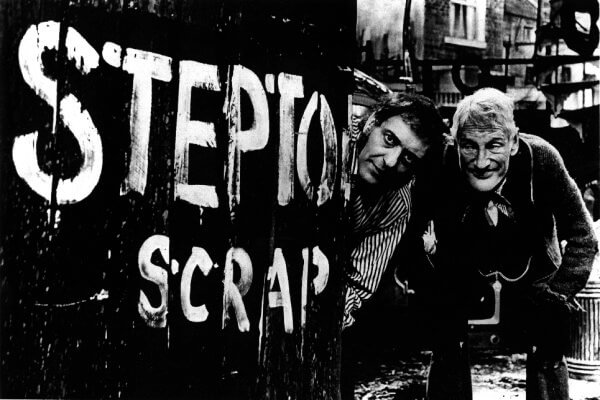Every year when I teach the sociology of work, I’m filled with the same nagging doubt: are my cultural references out of date? Are they still relevant for my students of nineteen and twenty, who were only just born in the previous century? Despite those worries, I continue to show a clip from The Rebel, a film featuring the British comedian Tony Hancock, because it illustrates beautifully the contrast between employment in 1960s and now, emphasizing through issues like job security, rigid class hierarchies at work, and the strict adherence to the working day.
Ray Galton and Alan Simpson collaborated with Hancock in the 50s and 60s, and for two decades beginning in 1954, they wrote some of the most memorable and timeless comedy scripts, first for radio and then for television. Their programmes drew huge audiences numbered in tens of millions, and one later episode reached 30 million people. What makes Simpson’s work important is how he drew inspiration from his own working-class background and translated that experience to show the complex range of working-class life while making millions of people laugh. As his obituary notes, Simpson was brought up in a working-class two-up-two-down household, the son of a milkman. He met Galton in a sanatorium whilst recovering from tuberculosis in their late teens. Bored by the enforced hospitalisation, the two began to create comedy sketches, and soon they were writing full time for other comedians.

Galton and Simpson first came to national prominence in their collaboration for Hancock. Each week they would explore an exaggerated feature of the comedian’s persona, and over time their sketches explored a whole series of questions about life and existence. When the pair fell out with Hancock in the early 1960s, they were commissioned by the BBC to write ten short plays. One of these, The Offer, became the series Steptoe and Son, which reflected the colourful life of father and son rag and bone men – street junk collectors (later transferred to the USA as Sanford and Son). The scripts and dialogue were earthy, realistic, and often uncompromising, but they also allowed the characters, played beautifully by Wilfred Bramble (the father Albert) and Harry H. Corbett (the son Harold), to expand and grow. While some of the laughs were derived from slapstick action, most of the thirty-minute episodes were driven by carefully crafted dialogue, richly peppered with deeply philosophical idea and political references. The tension in the father/ son relationship reflected a generational shift, with the older Steptoe drawing cultural references predating the Great War, while the son Harold repeatedly attempted to break out from the constriction of the life his father sought for him, keen to dive into the swinging sixties happening just beyond their junkyard gates in the mythical Oil Drum Lane, west London.

Looking back on these plays, for that is what they really were, I’m struck by how complex and nuanced they are in class terms. For all of Albert’s conservatism, he is resolutely happy to be working-class without being deferential to those middle- and upper-class characters with whom he interacts. Harold, on the other hand, while politically on the left, is often seen as overly deferential to his middle-class ‘betters’. He feels his lack of education and knowledge of culture, while is father revels in his ignorance. Steptoe and Son offers a deep meditation on the hidden injuries and rewards of being working-class. It enjoyed puncturing the pomposity and pretensions of the middle classes, but it did this while reflecting on the poverty of cultural aspiration and the sense of blinkered horizons and geographical immobility. In ranging across this material, Galton and Simpson drew on a wide range of historical material as well as complex and abstract ideas. Their scripts were peppered with the names of artists, philosophers, and other intellectuals.
Growing up in the 1970s, I didn’t notice many of the more complex elements of TV shows like Steptoe and Son and Hancock or the depths of the issues they represented. But I was aware that writers like Galton and Simpson — and a number of others from working-class backgrounds – were making comedy where elements of working-class life were examined without being ridiculed. People often note the way later TV series like The Wire offer a picture of flawed humanity, but I think many of the British comedy series from the 1960s and 1970s did the same thing. What seems most striking as I look back on the comedy of that era is that the working-class characters who populated primetime television schedules were presented as intelligent, thoughtful individuals who were part of a wider mass culture, however imperfect that environment may have been.
So I will keep showing my students these rapidly aging representations of working-class life. While they may be dated, their quality is timeless, in part because they examine questions that working-class people still confront in their daily lives. And also they are still very, very funny!







